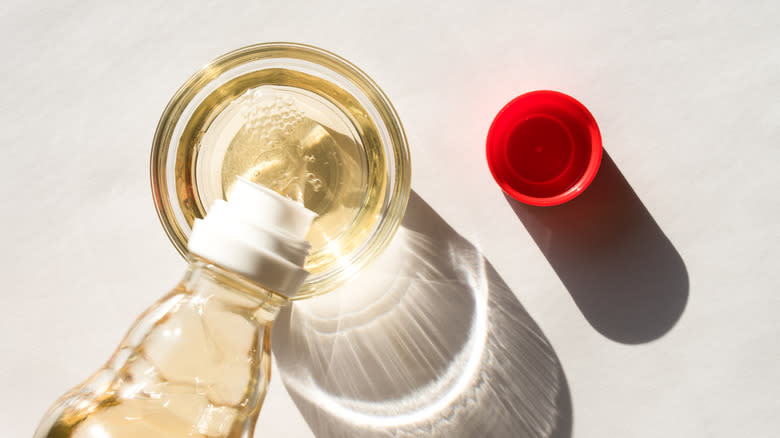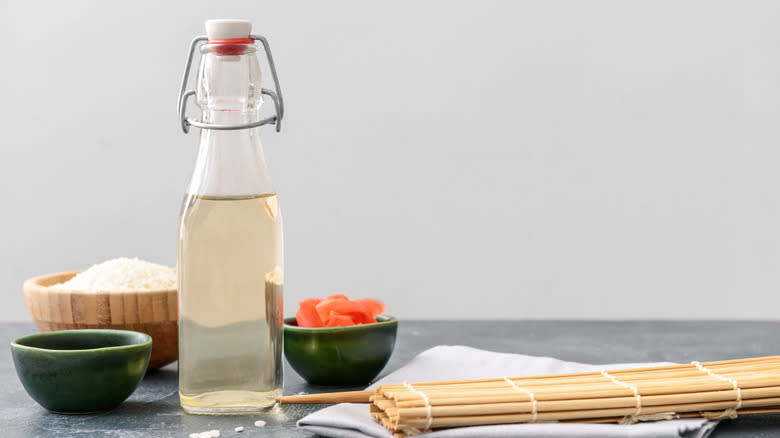Punch Up The Flavor Of Unseasoned Rice Vinegar With A Pinch Of Sugar

Rice vinegar provides the perfect amount of punch to practically any dish. It's not too acidic, leaving just a light tartness that brightens up food without overwhelming the flavor. While it's oftentimes everything we need, there are moments where unseasoned rice vinegar simply isn't enough. If you find your unseasoned rice vinegar needing a boost, add a pinch of sugar.
Coming from rice, rice wine vinegar (distinct from rice wine) is derived from fermented sugars in the grain. Organisms are then added, transforming the alcohol into acetic acid. This gives unseasoned rice wine vinegar its mildly sweet and tangy taste. While unseasoned rice vinegar doesn't contain any added sugar, seasoned vinegar does — this is what makes the starkest difference. The added sugar (and sometimes salt or MSG) in seasoned rice vinegar gives it a sweeter, more flavorful effect. Although the added sugar slightly tames seasoned rice vinegar's bite, it still has the perfect amount of tang and a lot more depth.
Seasoned rice vinegar is typically used at the end of cooking, but making sushi rice with it is what gives the grains their distinct flavor. Our spicy crab sushi salad relies on seasoned rice vinegar to imbue the rice with a delicately sweet taste. If all you have is unseasoned rice vinegar, a pinch of sugar will deliver similar effects. You can stir ¼ cup of sugar and ½ cup of rice vinegar over low heat until they dissolve or make a simple syrup to mix with the vinegar.
Read more: Vinegar Cooking Hacks You'll Wish You Knew Sooner
Use Seasoned Rice Vinegar To Spruce Up These Dishes

Due to the sweetness, seasoned rice vinegar is typically reserved for dressings, marinades, and the like rather than being a tool for cooking with. However, you can stir it with soy sauce to flavor your chicken fried rice or sweeten up a deeply umami stir fry. Two of our favorite uses for it are salad dressings and vinaigrettes.
A colorful toasted sesame salad isn't complete without a dressing that's potently sweet with seasoned rice vinegar's taste. The dressing calls for ginger, garlic, soy sauce, lime juice, and honey, but you can leave out the honey if it's too sweet. You can also opt for a nutty element with peanut butter or swap out the lime for lemongrass. A crunchy bok choy salad also gets a great boost with seasoned rice vinegar. The acid draws out the sweetness of the peppers and carrots while leaving the dish with a delicious tartness.
Aside from dressings, seasoned rice vinegar does its best work in marinades. The acetic acid tenderizes meat and fish while the sugar works to balance out savory nuances. Combine it with chili flakes, oyster sauce, and soy sauce to make a peppery, sweet marinade for spicy sesame beef or stir it into coconut milk, miso paste, and ginger powder to cook your salmon or cod in.
Read the original article on Tasting Table

